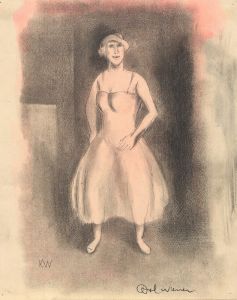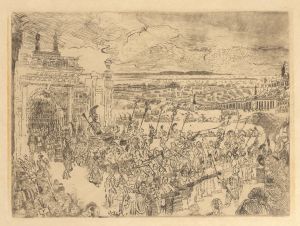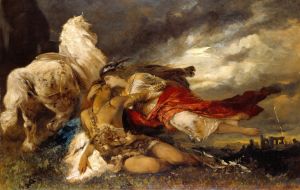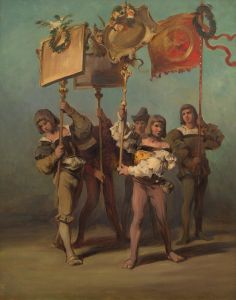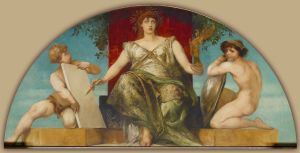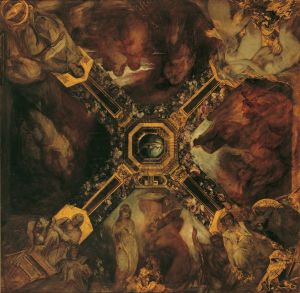
Entwurf zum Festzug 1879 – Die Buchdrucker, Buch- und Kunsthändler
A hand-painted replica of Hans Makart’s masterpiece Entwurf zum Festzug 1879 – Die Buchdrucker, Buch- und Kunsthändler, meticulously crafted by professional artists to capture the true essence of the original. Each piece is created with museum-quality canvas and rare mineral pigments, carefully painted by experienced artists with delicate brushstrokes and rich, layered colors to perfectly recreate the texture of the original artwork. Unlike machine-printed reproductions, this hand-painted version brings the painting to life, infused with the artist’s emotions and skill in every stroke. Whether for personal collection or home decoration, it instantly elevates the artistic atmosphere of any space.
"Entwurf zum Festzug 1879 – Die Buchdrucker, Buch- und Kunsthändler" (Design for the Parade 1879 – The Printers, Booksellers, and Art Dealers) is a painting by the Austrian artist Hans Makart. Makart, born on May 28, 1840, in Salzburg, was a prominent figure in the 19th-century art world, known for his historical paintings, portraits, and genre scenes. He was a leading artist of the Viennese Historicism movement and was celebrated for his opulent and dramatic style.
The painting was created as part of a series of designs for a grand parade held in Vienna in 1879 to celebrate the silver wedding anniversary of Emperor Franz Joseph I and Empress Elisabeth of Austria. This parade, known as the "Festzug," was a significant cultural event, showcasing various aspects of Austrian history, industry, and society through elaborate floats and costumes.
"Entwurf zum Festzug 1879 – Die Buchdrucker, Buch- und Kunsthändler" specifically depicts the float representing the printing, book, and art trade industries. Makart's design highlights the importance of these professions in the cultural and intellectual life of Austria. The painting features a richly decorated float with figures symbolizing the different aspects of the book and art trades. The composition is characterized by Makart's typical use of vibrant colors, dynamic poses, and intricate details.
Hans Makart's involvement in the Festzug project was a testament to his status as a leading artist of his time. His designs for the parade were highly praised for their artistic merit and contributed to the overall success of the event. The Festzug itself was a grand spectacle, drawing large crowds and receiving widespread acclaim for its celebration of Austrian culture and history.
Makart's work on the Festzug, including "Entwurf zum Festzug 1879 – Die Buchdrucker, Buch- und Kunsthändler," reflects his ability to blend historical themes with contemporary artistic trends. His paintings often featured historical or allegorical subjects, rendered in a highly decorative and theatrical manner. This approach made him one of the most popular and influential artists in Vienna during the late 19th century.
Today, Hans Makart's paintings, including his designs for the 1879 Festzug, are appreciated for their artistic quality and historical significance. They offer a glimpse into the cultural and social milieu of 19th-century Austria and the role of art in public celebrations and national identity. Makart's legacy continues to be celebrated in art history, and his works are held in various museums and collections around the world.





